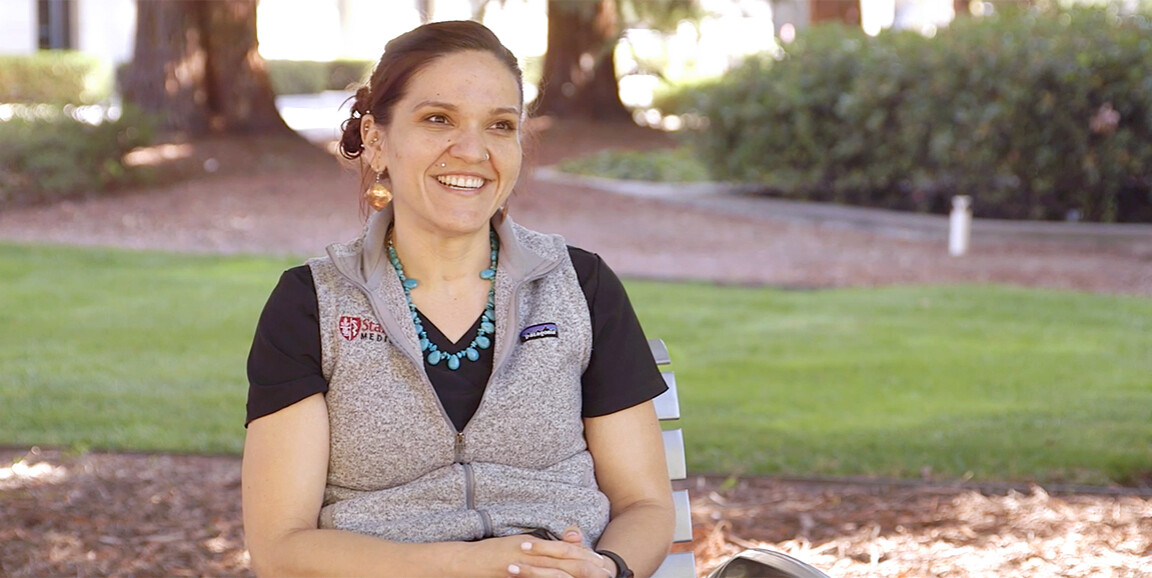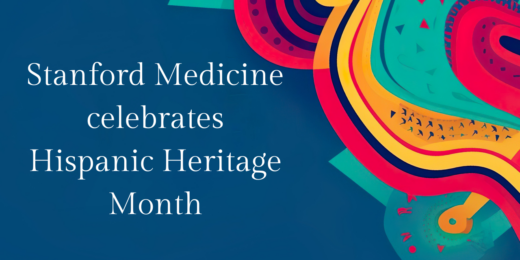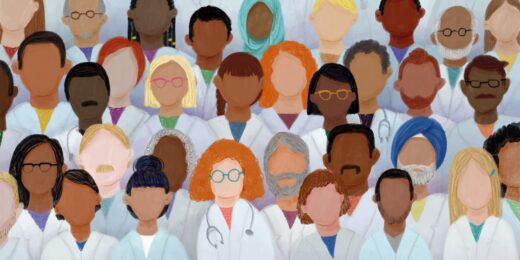When Melissa Eidman, a member of the Yurok Tribe, graduates from the Stanford School of Medicine in the spring, she will start a four-year residency training program in family medicine/OB-GYN. She will also be one step closer to bringing her medical training back to her home on the Yurok Reservation that stretches between coastal Humboldt and Del Norte counties as a primary care physician.
She knows all too well the need -- and the dire numbers -- of Indian Country, the legal term for any self-governing Native American/American Indian communities throughout the United States.
Native Americans in the United States have poorer health and a shorter lifespan relative to other groups, according to a recent study. Meanwhile, fewer than 1% of U.S. doctors, or about 3,400, are Native, according to the American Medical Association, and fewer than half of all U.S. medical schools enroll a Native American/Alaska Native student, STAT reports.
Eidman realizes the opportunity she has to help change that narrative and she, a Knight-Hennessy scholar, discussed her pursuit of medicine, her involvement in and leadership of Native community celebrations on campus, and what she has planned for her future as a health care provider.
What motivated you to study the health sciences and how did you end up at Stanford Medicine?
The primary reason I chose medicine is also what motivates me: I want to return home and serve my community. I am training to practice family medicine/OBGYN because I love the idea of caring for a person's whole life, from before they are born until they pass on. Also, the needs in Indian Country are clear when it comes to women; the maternal mortality rates are high, nearly double those of other racial and ethnic groups.
I grew up in Sacramento and am close to family who live on the reservation. Their access to health care is so different than what I had access to growing up. I always knew I wanted to be a doctor but at first it seemed too big, like I couldn't do that. After high school, I attended community college for six years, completing the coursework necessary to transfer to a four-year university. When I was accepted as an undergraduate transfer student to Stanford University, it was probably the most life-changing experience I've had. It opened doors that I never knew existed, and once I got here, the path to medicine became a lot easier.
As an undergrad, I struggled with where to attend medical school. I ultimately chose Stanford Medicine because I realized, it doesn't matter how passionate I am about healing my community and helping Indian Country at large -- I'm just one person, one experience. I wanted to be in a community of people who share my passions. That's what the Knight-Hennessey Scholar program is all about.
You have co-chaired the Stanford Powwow. What is the event, and what was that like?
The Stanford Powwow is such a joy. Each year the Powwow event brings together people from all over, from different tribes and communities, to celebrate Indigenous culture through dance, music, art and food. Volunteering for the Powwow during my first year as an undergraduate was how I found my place in the Native community on campus. I was one of three co-chairs my senior year. I learned a lot about the value of putting time and effort into an event, how that can become a gift to the Native community and the Stanford and Palo Alto communities.
How do your experiences and education influence how you plan to practice medicine in your community?
To me, practicing medicine means keeping people well and healing them, both from a medical perspective and by caring for the whole person.
I was raised to think about the whole person, how the whole system -- mental, social and physical -- is working together to create someone's experience and health.
As an undergrad, I carried out qualitative research to identify strengths and challenges related to health care on the Yurok Reservation. A lot of the barriers I identified were the result of a disconnect between what providers and community members thought was important. This disconnect is a contributing factor to the mistrust of the medical system by Native peoples.
The opioid epidemic has also exacerbated issues around mistrust of Western medicine and Western doctors. I know how important it is to find common ground with patients and as a provider, I want to partner with Native peoples to help them make informed decisions about their health.
When I began my journey into medicine, I didn't know any other Native people who were training in health care. But through the communities I am part of at Stanford Medicine and through the Association of Native American Medical Students, I've met more Natives in pursuit of medicine for reasons like my own -- to give back to their community. That is so important. Overcoming the historical trauma Native People have experienced because of the Western health care system is going to require not only physicians willing to serve Indian Country, but also investment in the prospective medical students coming from our own communities. We need health care by Native people for Native people.
Our presence in medical school classrooms doesn't just benefit us, but it enhances learning for the whole medical community. We bring a unique perspective, including awareness of the strengths and challenges experienced by Native communities.
What do you hope young Native students who read this story take away from your experiences?
I want them to know that anything they're passionate about is possible, whether medicine, teaching, or basketball. For Native youth interested in higher education, it might seem like we are expected to fit into boxes that we might not identify with. Even though we might take a different path to get there, our experience is valid and valuable.
For additional related content about the people and programs that support Native and Indigenous communities, see below:
Meet three Knight-Hennessy scholars pursuing projects with impact
Indigenous advocacy leader garners support at Stanford Medicine
Photo by Todd Holland






